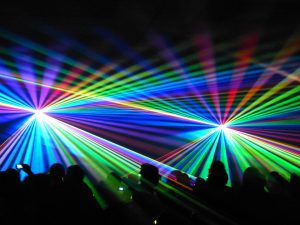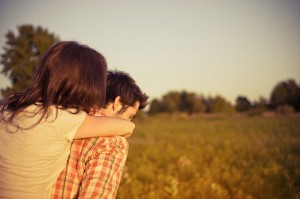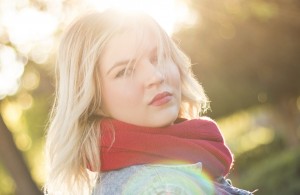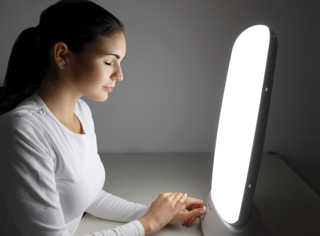
Why is it that we understand the power and importance of light for the world around us, but we don’t appreciate the effect it can have on humans? We understand how light affects the world, the earth, the sea, the depth of the earth that we cannot reach, and just about anything we comprehend globally. But the medical field is yet to fully comprehend or embrace the power that light has over us as humans. Flavia Schlegel, Assistant Director-General for Natural Sciences spoke at the Internal Year of Light conference in Merida, Mexico in February 2016.. Schlegel discussed the importance of light therapy being cost effective and practical for the 2030 Agenda for Sustainable Development.
Julianne Bien, owner of Spectrahue Light & Sound Inc., is the inventor of the Spectrahue method of color light therapy. She owns a Toronto-based company that sells handheld light therapy tools and educational tools. Bien wrote a piece for Common Ground’s “health and spirit” section of their website. Bien discussed how incredible it is that light therapy is finally being taken seriously. Bien writes, “Health-related uses of light include diagnostics, surgery, psychiatry, psychology, revitalization, rejuvenation and emotional and spiritual makeovers. We have laser-based instruments, LED-based apparatuses, full-spectrum lights and various digital and analogue devices. Where we lag behind is in understanding how, exactly, our bodies respond to light. This is why terms such as chromotherapy, phototherapy and light therapy in general – although ancient in origin – very slowly progress toward full endorsement of the medical establishment.” (commonground.ca)
The world inside of us is just as important as the world around us. Light therapy can help us effectively manage the world inside of us. Conditions such as emotional trauma, autoimmune problems, allergies, metabolic imbalances, seasonal affective disorder, jet lag, sleep and attention deficit disorders have been showing better results with the use of light therapy than other medical options such as medicines and surgeries. Bien claims that there are very good reasons for this, but the medical world hasn’t quite explored it yet.
Back in the 20th century, John Ott, a photo biologist, made an interesting discovery. Ott was assigned to document the effects that pharmaceutical drugs had on living cells. He used an electronic microscope and a special camera to do this. Ott discovered that when he changed the color filters on his camera lens, the cells’ behavior changed as well. Ott claimed that the color changes had even more of an effect on the cells than the drugs had. This is what inspired Julianne Bien’s company. Bien discussed this in her Common Ground article as well by stating:
“On the ‘ground level’ where life in our bodies unfolds, light and colour have more say than chemical compounds which we concoct. Our cells naturally understand the language of light and its messages – which the colours convey through their frequencies – to ignite, burn, sizzle, scorch, smoulder or go off. That’s the same cycle the stars in our universe undergo.
“I’m often asked how colour light therapy really works. It appears esoteric and mystical, bordering on magic. The best analogy I know – one we all know well – is fire.
“Fire is quirky. It is our species’ first tool, process and weapon. It gives off light and heat on demand, echoing our life-giving star in the sky, and we get to wield it at will. If you look closely, it varies in colour, depending on intensity. At first, it’s yellow and orange; green flame tips and blue-ish bursts will tell you it’s sizzling; you’ll want it bright white, though, if you wish to melt metal or bake clay.
“Still, starting and maintaining a fire is tricky, at best. It’s moody. It might flare up in an instant or just smoulder for hours. Sometimes, a trained hand gives up in frustration; another time a fire will light itself up. Too much moisture around it and it won’t even start; too little and it burns itself out.
“So it is with us. We are internal combustion engines, with trillions of tiny burners. Our cells burn up oxygen and produce heat. They use the resulting light as an ultra-fast messaging system. It all works to perfection – from toes to teeth – except when it won’t.
“When an imbalance sets in, our internal flame in an organ dies down. Or it flares up, past all safety limits, causing redness, fever and pain. We don’t know what triggers this any more than we can pinpoint the cause of a wild forest fire or control it.
“Knowing how tiny our internal burners are, it’s easy to see how fine-tuned and delicate any support we give them must also be.” (commonground.ca)
Bien sells handheld color light therapy devices that she believes are even more effective than normal light therapy. Most light therapy devices output a bright light, with a wide surface being covered, in just one direction. Handheld color light therapy illuminators “work off the silent communication between the person sending faint light and the person receiving it”, according to Bien.
The concept of color light therapy is an ancient finding. Records exist from thousands of years ago that show conditions and disorders being effectively cured with color light therapy practices. This form of therapy is harmless and brilliant, but the world seems to have forgotten the importance of this discovery over time. If an equal amount of time and money that is used for chemical drug experiments was used to further research color light therapy, the world would quickly become a much healthier – and brighter – place.







